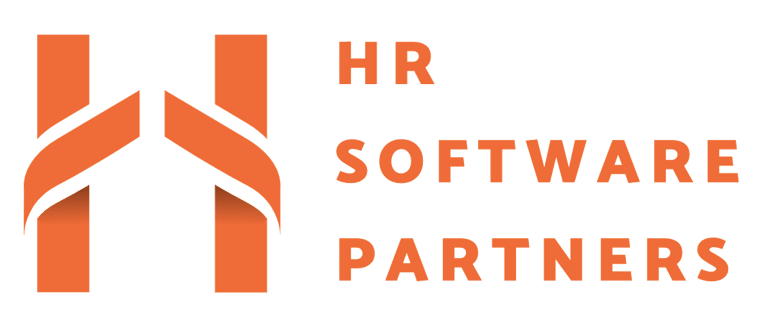The Role of HR Software in Succession Planning for SMEs
Explore how small and medium-sized enterprises (SMEs) can leverage HR software to develop effective succession planning strategies. This article dives deep into how modern HR solutions streamline leadership transitions, enhance talent retention, and future-proof organizations with smart technology.


Explore how small and medium-sized enterprises (SMEs) can leverage HR software to develop effective succession planning strategies. This article dives deep into how modern HR solutions streamline leadership transitions, enhance talent retention, and future-proof organizations with smart technology.
Introduction & Importance of Succession Planning for SMEs
Succession planning is far more than filling vacancies; it’s about ensuring a smooth transition during leadership changes and maintaining the continuity of your business vision and operations. For SMEs, especially in a rapidly changing business landscape, the stakes are incredibly high. With resource constraints and evolving market demands, effective succession planning is essential to safeguard your company’s future. As one industry expert famously stated, "Succession planning isn’t a luxury—it’s your strategic lifeline."
Small and medium-sized enterprises often face unique challenges: a smaller talent pool compared to large corporations, limited budgets, and the need to maintain agility in decision-making. The proactive implementation of robust succession plans helps mitigate risks associated with unexpected departures, retirements, or rapid growth phases, ensuring that your business continues to thrive regardless of leadership changes.
Key HR Software Features that Drive Succession Planning Success
Modern HR software is not just about record-keeping—it’s a powerful tool that can transform how SMEs approach succession planning. The right HR platform, such as Factorial HR, offers comprehensive features that can support every facet of succession planning:
1. Centralized Data Management: Central to any succession plan is a reliable database of employee skills, experiences, and performance reviews. A unified HR system consolidates this information, ensuring that you always have a “single truth” about talent within your organization. This minimizes errors and streamlines decision-making.
2. Performance & Talent Analytics: It’s one thing to store data; it’s another to act on it. HR software equipped with analytics can identify high-potential employees based on performance trends and career progression. Automated dashboards allow managers to spot talent gaps before they become critical issues, holding up a promise as clear as: "Data-driven decisions today secure leadership tomorrow."
3. Learning & Development Integration: Continuous development plays a significant role in preparing your team for future leadership roles. Modern HR platforms can integrate training modules, track certifications, and schedule mentorship programs that educate tomorrow’s leaders, making the transition smoother.
4. Automated Alerts & Reminders: Forget manual tracking. Automated notifications keep your team informed on upcoming milestones such as performance reviews or skill development check-ins, ensuring the succession planning process is ongoing and proactive rather than reactive.
5. Compliance and Risk Management: Especially in the UK, adherence to regulations like GDPR is paramount. A competent HR platform simplifies compliance management, ensuring that your employee data is secure and that succession plans are built on a solid legal foundation.
These features put power in your hands, allowing SMEs to move beyond mere paperwork and to foster a dynamic and resilient leadership pipeline.
Real-World Applications and Case Studies
Let’s get into the practical side of things. Numerous SMEs are already harnessing the power of HR software to streamline succession planning. Imagine a fast-growing digital agency in Manchester facing rapid expansion with new client demands, all of which required quick adjustments in leadership roles. By adopting a cloud-based HR solution, the agency was able to map out career trajectories, identify potential leaders early, and schedule personalized development programs. This meant they were not caught off-guard when a key team leader left for new ventures.
Consider the case study of a mid-sized private healthcare clinic in Bristol, which relies heavily on qualified and committed personnel. Before implementing integrated HR software, the clinic struggled with scattered performance reviews and disjointed training records. After switching to Factorial HR, they achieved a seamless consolidation of data and a centralized dashboard that highlighted individual performance trends. This allowed HR and management teams to proactively pinpoint future leaders and craft succession plans that aligned with both regulatory standards and strategic growth initiatives.
These real-world examples underscore a powerful truth: when your HR processes are digitized, succession planning becomes an ongoing dialogue rather than an afterthought. As one CFO put it, "The HR dashboard didn't just give us a snapshot; it provided a blueprint for the future."
Challenges and Best Practices in Implementing HR Software
Even the most sophisticated HR software comes with its own set of challenges. The common hurdles include data migration issues, user adoption problems, and the need to customize the platform to suit unique business needs. However, tackling these issues head-on is far simpler than trying to manage succession planning manually. Here are some best practices that ensuring you make the most of HR technology:
1. Begin with a Clear Strategy: Define what you want your succession planning process to look like. Identify key roles and the competencies required for each. With a clear strategy, HR software can help you pinpoint skill gaps and future leaders.
2. Engage Stakeholders: Involve HR managers, department heads, and even employees early in the process. Their insights can tailor the HR platform to your company’s unique culture and operational rhythm. Collaboration ensures that anyone who uses the system feels ownership right from the start.
3. Prioritize Training and Change Management: New software is only as good as its adoption rate. Invest in comprehensive training sessions and create a change management plan that eases the transition. Remember, every great transformation starts with strong buy-in from your team.
4. Leverage Automation, But Keep Human Oversight: HR technology offers brilliant efficiency with automated alerts and analytics. However, human oversight is essential to interpret these signals effectively. A balanced synergy between human judgment and data-driven insights is often the recipe for success.
5. Ensure Scalability: Your HR software should not be a one-trick pony; as your business grows, so should its capabilities. Choose a platform that scales with you, adapting to growing complexities and additional functionalities as required. In other words, invest in technology that grows with your business ambitions.
Future Trends and The Strategic Advantage of HR Software
Looking ahead, the intersection of AI and HR software is set to revolutionize succession planning further. With machine learning algorithms predicting employee turnover, pinpointing emerging talent, and even recommending personalized development paths, the future is incredibly bright. Modern HR systems are evolving from passive record-keeping tools into proactive strategic partners, capable of providing insights that once required a full team of analysts.
Emerging trends that SMEs should watch include:
• Predictive Analytics: The next generation of HR software will improve its ability to predict flight risks and turnover, enabling preemptive action that can save an organization significant time and money.
• Enhanced Mobile Accessibility: With the rise of remote and field teams, mobile-first HR solutions ensure that leadership planning and performance management remain agile and accessible regardless of location.
• Integration with Broader Business Systems: Expect tighter integrations with payroll systems, project management tools, and even broader ERP solutions, making the entire HR process more interlinked and efficient.
In a digital world where talent is the most prized asset, HR software offers a strategic advantage. It’s not merely a tool but a partner in your organizational journey, unlocking potential and setting the stage for a resilient leadership pipeline. Simply put, the companies that invest in modern HR technology today are laying down the groundwork for a prosperous tomorrow.
Conclusion: The Transformative Power of HR Software in Succession Planning
Succession planning is an indispensable strategy for any SME eyeing sustainable growth. With HR challenges such as manual processes, regulatory compliance, and talent management errors being rampant, the transition to automated, centralized HR systems is more than just smart—it’s essential. HR software fills the gap between routine HR tasks and strategic decision-making, offering solutions that are both scalable and intuitive.
By integrating data centralization, performance analytics, and automated monitoring, SMEs can easily turn succession planning into a proactive, strategic function that not only protects the organization against unexpected disruptions but also drives forward a culture of continuous improvement and leadership development. It’s clear: modern HR software is not just about making your life easier—it’s about future-proofing your entire business.
